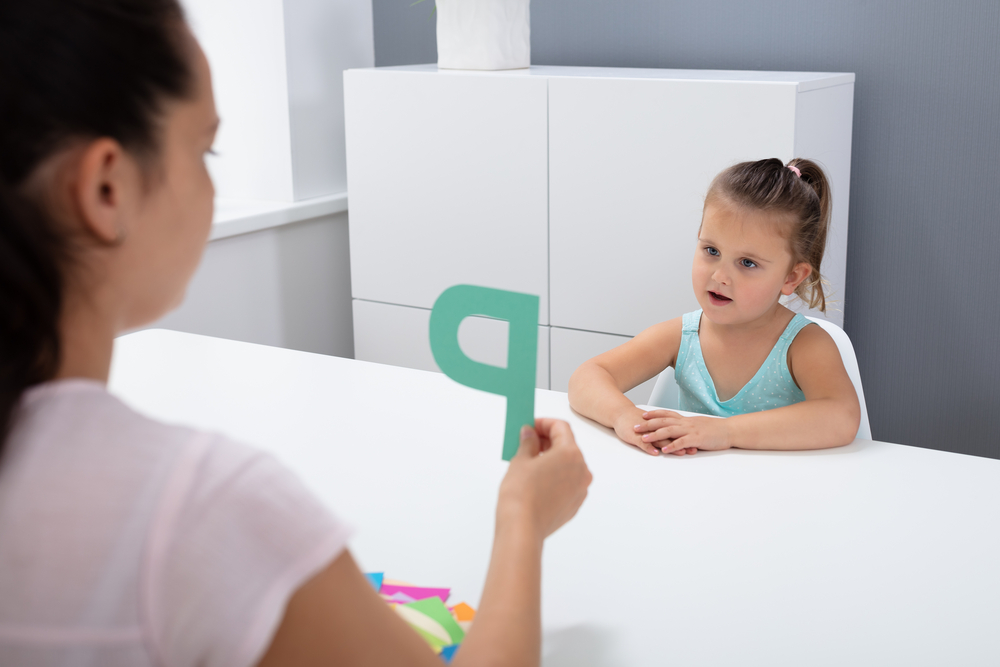Segmenting words is one of the critical skills children use to spell correctly and read fluently. For example, when a child encounters an unfamiliar word, their segmenting skills can help them figure out its spelling or how to pronounce it.
In this article, we’ll offer tips on how to teach segmenting at home. We’ll also share our top five activities that you can use to help your young learner develop this essential skill.
But first, let’s start by understanding what segmenting actually means.
What Does It Mean To Segment Words?

Segmenting is a skill that focuses on breaking up words into their individual sounds. For example, when we spell the word dog, we separate it into its three separate sounds: /d/-/o/-/g/.
It’s important to note that the length of the word doesn’t matter. What matters are the individual sounds the word produces.
Here’s another example with a slightly longer word: right. This word has five letters but only three sounds: /r/-/igh/-/t/. This is because the igh phonogram represents the single sound of the long I.
Why Is Segmenting Words Important
We’ve already discussed that segmenting plays a significant role in reading development and spelling. But what does this actually look like?
When children learn to read and spell, they often use two key skills: segmenting (separating the sounds) and blending (combining the sounds).
For example, when a child reads the word hat, they may start by slowly saying each sound: /h/-/a/-/t/ (this is segmenting) and then quickly combine and say the sounds: hat (this is blending).
This is important because children can use this same skill when learning to spell unfamiliar words. A child who is unable to segment may struggle to read and spell words correctly.
Segmenting also helps develop a child’s phonemic awareness. Because of this, you’ll notice that some of our activities below focus on helping children become aware of the phonemes, the individual sounds in words.
Tips For Introducing This Skill

There are many different ways to help kids learn how to segment. Here’s a summary of the most common strategies.
Segment Compound Words First
Start with segmenting compound words (e.g., /sail/-/boat/), and then separate sounds by focusing on syllables (e.g., /ti/-/ger/). Finally, move on to individual sounds, phonemes (e.g., /c/-/a/-/t/).
Starting with larger chunks of words is best and can help your child develop the phonemic skills needed to do the harder job of noticing all of the individual sounds in a given word.
Model Segmenting
Start by doing the segmenting yourself and encouraging your child to blend the sounds.
“Bathtub” has two words: bath and tub. Can you put them together? “Fox” has three sounds: /f/-/o/-/x/. Can you blend them?
Once you’ve practiced this way a few times, you can then ask your child to segment on their own.
“Sailboat” has two words. Can you separate them? “Tiger” has two syllables. Can you separate them? “Cat” has three sounds. Can you separate them?
You can even model the sounds physically by using an abacus — a device with colorful beads that slide left and right on a wire frame — to help them count the sounds. But most importantly, give them plenty of time to practice!
5 Activities To Make Segmenting Words Fun
1) Robot Talk

Since segmenting is about separating the sounds of a word, speaking like a robot can help your child grasp this concept.
For this fun activity, you can use a robot puppet or toy to grab your child’s attention. Encourage them to respond in a robot voice as well!
/Time/-/to/-/go/-/to/-/school/. /Are/-/you/-/rea/-/dy/?
Did you notice how we segmented using syllables, not phonemes? Using syllables is a beneficial tool to help your child decode words. It also helps them learn which parts of a word to stress and the different cadences and patterns in the English language.
With this in mind, don’t be afraid to say funny things or ask silly questions when using your robot voice.
/Show/-/me/-/your/-/sil/li/est/-/face/!
This will probably get lots of giggles, and there’s nothing wrong with a bit of fun while learning!
2) Dress Up Teddy
For this fun activity, all you need are a few doll clothes (e.g., a hat, top, pants, socks, etc.) and a teddy bear that’s willing to try on some outfits!
To get started, lay out the clothing items and then encourage your child to dress their teddy bear. Model segmenting the word hat by saying, “It’s hot outside. I think Mr. Teddy needs a /h/-/a/-/t/.”
Instead of just grabbing the hat and putting it on, your child will need to first copy you and say the word out loud in segments: /h/-/a/-/t/. This activity allows your child to practice the individual phonemes of each word.
Modeling is crucial at the beginning of your child’s segmenting journey. The good news is you can model segmenting any time as you go about your day. For example, you might say, “I think I will wear the /r/-/e/-/d/ shirt today.”
3) Change One Letter

Once your child has had some practice with phonemes, it’s time to switch things up a bit by swapping letter sounds in words. It’s best to start with changing the first sound of a word.
For example, you can say the word cat and ask your child what happens if you switch the /k/ sound to a /b/ sound. What does the word then become? Keep in mind that this activity focuses on sounds rather than letters.
After playing for a bit, you can then have your child repeat the game using magnetic letters to make the switches. Once your child is comfortable with first-sound switches, move on to last sounds. For example, cat becomes can and then becomes cap.
While this activity is very effective, it can also be a little challenging for young children to grasp, especially when they’re just beginning to work on segmenting.
To guide your child, be sure to really emphasize whichever letter is being replaced. For example, in the pattern mat — map — mad, emphasize the t, p, and d when modeling it for your child.
4) Find The Letters
For this activity, you’ll need a few index cards (or alphabet cutouts) and a marker. Start by writing one letter on each index card (if you don’t have alphabet cutouts). Then, shuffle the cards so they are in no particular order.
Next, say a word and then ask your child to find the letters and place them in the correct order. For example, you can say bat. Your child would look through the cards to find b, a, and t and place them in the right order.
Choose simple CVC words in the beginning. As your child gets more comfortable with the concept, you can move on to more complicated word patterns.
This is an excellent activity to focus on the phonemes of each word, a key skill in segmenting.
Note: If your child is just starting out, they may spell out /b/-/e/-/t/ instead of /b/-/a/-/t/. That’s OK! In fact, take this as a step in the right direction because it shows that they are noticing a vowel sound in the middle. With a little more time and practice, they’ll soon get it right.
5) Hop The Sounds
We love this activity because, while it may sound simple, it’s very effective when learning to segment. All you need is some open space (preferably outside) and an energetic youngster.
Start by saying a word, and then have your child hop the same amount of times as there are phonemes in that word. For example, if you say cat, your child will give you three hops forward as they say the sounds /c/-/a/-/t/.
The goal is for them to reach you in the end!
Let’s Get Segmenting!

When a child learns to read, it opens up a whole new world for them! And when they spell correctly, it gives them the confidence to continue learning and growing in their literacy journey.
Segmenting words can help your child achieve these important early literacy skills.
Remember to keep these tips in mind as you help your child learn to segment at home:
- Start with compound words and syllables before moving to phonemes
- Encourage them to count the sounds with a physical object
- Allow for lots of practice
Whether you try out some or all of the above activities, remember to exercise patience with your child. Some days, they may quickly grasp the concepts, while other days might be a little more challenging.
No matter where they are on their journey, continue working on segmenting. When your child finally starts reading fluently and spelling correctly, you’ll see that the effort was worthwhile.
To help your child have fun while learning, check out our Learn & Grow app today!












